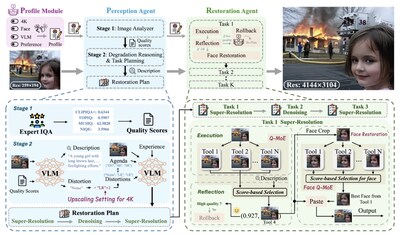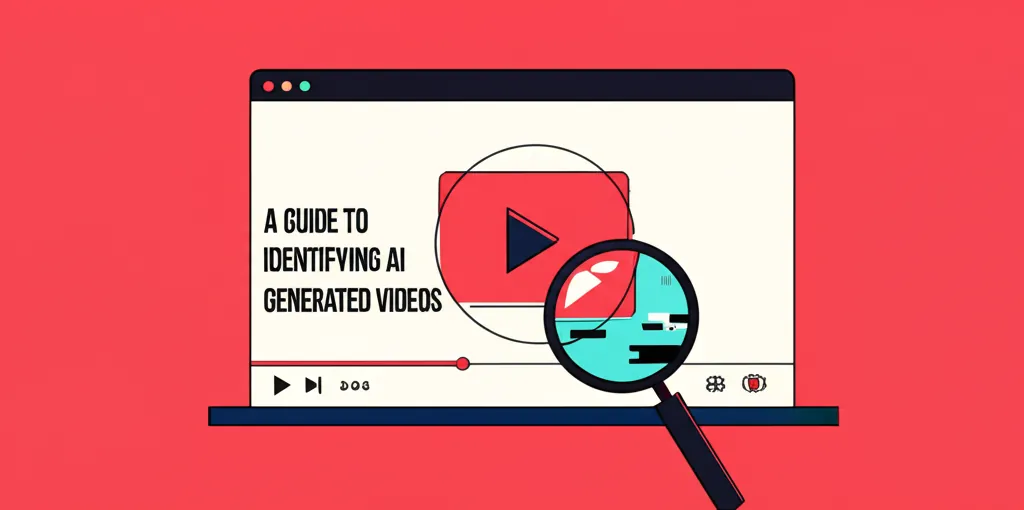Developer Offer
Try ImaginePro API with 50 Free Credits
Build and ship AI-powered visuals with Midjourney, Flux, and more — free credits refresh every month.
AI Now Edits Photos Like a Professional Human Editor
A New Era in Photo Editing
Imagine an AI that doesn't just apply a generic filter, but intelligently analyzes your photos like a seasoned professional, crafting a unique plan to restore them to perfection. That future is now a reality thanks to a major breakthrough announced by Topaz Labs and a consortium of leading academic institutions, including Texas A&M University, Stanford University, and Caltech.
Together, they have developed 4KAgent, the world's first fully agentic photo restoration system. This groundbreaking open-source framework uses a team of over 50 specialized AI models to autonomously diagnose, plan, and perfect images, effectively mirroring the complex workflow of a human expert.
How Agentic AI Mimics a Professional Editor
Traditional photo restoration is a complex task. It requires not only artistic skill but also the technical knowledge to choose and sequence the right tools for denoising, deblurring, upscaling, or recovering faces. The new agentic system from Topaz Labs automates this entire process with a sophisticated four-step approach:
- Diagnose: The AI first examines the image to identify specific issues like digital noise, motion blur, or compression artifacts.
- Plan: Based on its diagnosis, it creates a custom action graph—a tailored sequence of editing steps designed specifically for that image.
- Execute: The system then carries out the plan, selecting the best tools from its library of over 50 specialized AI models.
- Evaluate and Adapt: After each step, the agent reviews the quality of the output. If the result isn't perfect, it reflects on the outcome and revises the plan, trying a new approach until the best possible image is achieved.
"What makes this system different is that it doesn't just apply models blindly," explains Xiaoyu Wang, Head of AI at Topaz Labs. "It perceives the image, reasons about what's wrong, and chooses the right tools to fix it. If the results aren't good enough, it reflects and replans. That ability to adapt makes it fundamentally new."

A Landmark Academic and Industry Collaboration
This project represents a powerful partnership between industry and academia. Initiated with Texas A&M University, the collaboration grew to include scholars from Caltech, CU Boulder, Snap Inc., UT Austin, and UC Merced, with Topaz Labs providing the research direction, funding, and system integration.
Professor Zhengzhong Tu of Texas A&M University calls the work a "paradigm shift from passive AI models to active, reasoning systems." He adds, "By embedding perception, planning, and reflection into a single framework, we're moving closer to AGI that truly collaborates with humans in creative and professional workflows."
Why This Open-Source Breakthrough Matters
The team has made the entire system open-source to accelerate progress in agentic AI and empower the creative community. This decision has several profound implications:
- Democratization of Quality: Anyone can now achieve professional-grade results without needing expert skills or expensive software.
- A Foundation for the Future: The flexible framework allows new and better AI models to be seamlessly integrated as they are developed.
- Broad Applicability: The system excels with all kinds of images, from family photos and AI-generated art to scientific imagery like X-rays.
- Raising the Bar for Quality: Open collaboration encourages higher standards across the entire imaging industry.
This project is more than just a new tool; it's a first step toward truly intelligent and autonomous image editing systems that can reason, create, and collaborate.
About Topaz Labs
Founded in 2005, Topaz Labs is a leader in AI-powered image and video enhancement technology, serving 1.5 million customers worldwide. Known for its industry-leading products, the company is dedicated to advancing the frontiers of imaging through research and collaboration. Learn more about their work at the Topaz Labs website.

View the original press release to download multimedia assets.
Compare Plans & Pricing
Find the plan that matches your workload and unlock full access to ImaginePro.
| Plan | Price | Highlights |
|---|---|---|
| Standard | $8 / month |
|
| Premium | $20 / month |
|
Need custom terms? Talk to us to tailor credits, rate limits, or deployment options.
View All Pricing Details

